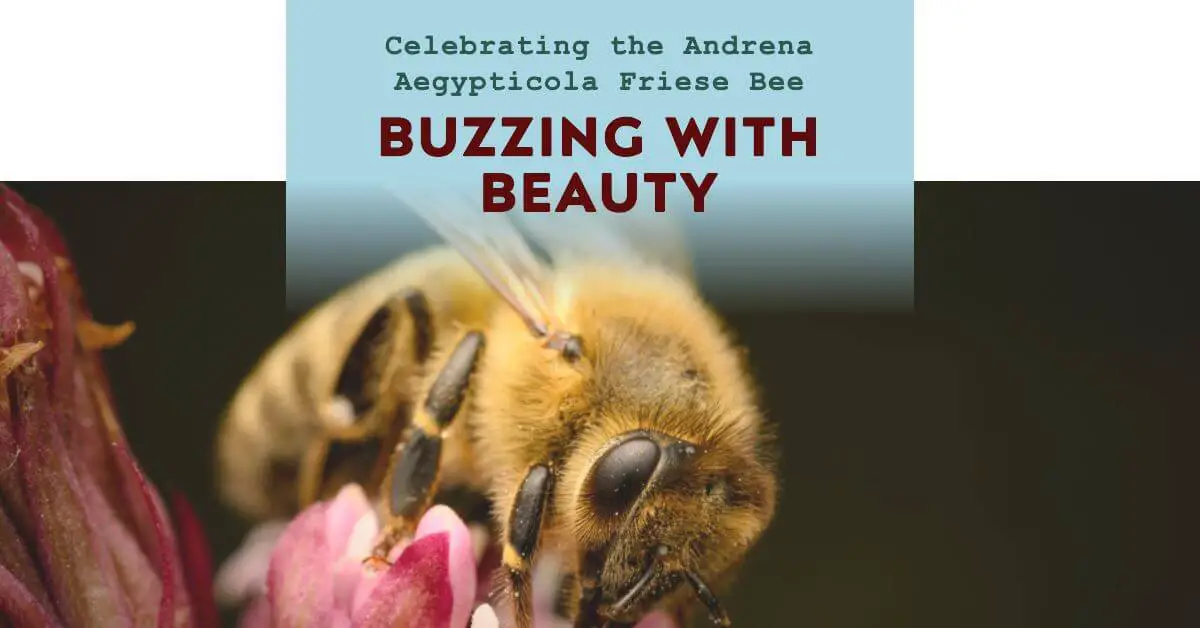In this article, we delve into the captivating world of Andrena aegypticola Friese, an intriguing bee species with unique characteristics and behavior. From its habitat and distribution to its importance and conservation status, we explore various aspects of this remarkable insect. Join us on this informative journey as we uncover the secrets of Andrena aegypticola Friese.
| Kingdom | Animalia |
| Phylum | Arthropoda |
| Class | Insecta |
| Order | Hymenoptera |
| Family | Andrenidae |
| Genus | Andrena |
| Species | aegypticola |
| Author | Friese |
What is Andrena aegypticola Friese?
Andrena aegypticola Friese, commonly known as the Egyptian Andrena, is a species of solitary bee belonging to the family Andrenidae. These bees are native to the region of North Africa and have garnered attention for their distinct features and behaviors. Let’s take a closer look at their habitat, distribution, and physical characteristics.
Habitat and Distribution
The Egyptian Andrena primarily inhabits arid and semi-arid regions of North Africa. They are well adapted to thrive in environments with limited water availability and can be found in various ecosystems, including deserts, coastal areas, and Mediterranean woodlands. Their distribution ranges from countries like Egypt, Libya, Tunisia, and Algeria, where they play a vital role in pollination.
Physical Characteristics
Andrena aegypticola Friese possesses several notable physical characteristics that set them apart from other bee species. These bees have an average body length of approximately 10-12 millimeters, with females being slightly larger than males. They exhibit a striking black coloration on their body, which contrasts beautifully with their vibrant reddish-brown hairs on the thorax and abdomen. Their wings are translucent and have a delicate appearance.
Life Cycle and Behavior
Like other solitary bee species, Andrena aegypticola Friese follows a fascinating life cycle. The females construct nest burrows in the ground, where they lay their eggs and provide provisions of pollen and nectar for the developing larvae. After hatching, the larvae go through several stages of growth before pupating and eventually emerging as adult bees.
These bees are known for their foraging behavior and play a crucial role in pollinating a variety of flowering plants in their habitat. They exhibit a preference for specific floral resources, forming important relationships with the local flora. Understanding their behavior and interactions with their environment provides valuable insights into the delicate balance of ecosystems.
Importance of Andrena Aegypticola
Andrena aegypticola Friese holds significant ecological importance as an efficient pollinator in its native range. The intricate relationship between these bees and the plants they pollinate helps sustain biodiversity and ensures the reproduction of many flowering species. Their role in ecosystem functioning highlights the importance of conservation efforts to safeguard their populations.
Threats and Conservation
Despite their ecological significance, Andrena aegypticola Friese faces various threats that jeopardize their survival. Habitat loss due to expanding human activities, including agriculture and urbanization, poses a significant challenge for these bees. Climate change and pesticide use further exacerbate the risks they face.
To protect Andrena aegypticola Friese and preserve their vital role in ecosystems, conservation initiatives are crucial. Efforts such as habitat restoration, raising awareness, and promoting sustainable land-use practices can help mitigate the threats they encounter and ensure their continued existence.
Related Posts:
Tips for Observing Andrena Aegypticola
If you’re interested in observing Andrena aegypticola Friese in their natural habitat, here are a few tips to enhance your chances of encountering these captivating bees:
- Research their preferred habitats: Learn about the specific environments and floral resources that attract Andrena Friese. This knowledge will guide you to suitable locations for observation.
- Timing is key: Be aware of their active periods, which may vary depending on the region and climate. Plan your observations accordingly to increase the likelihood of sightings.
- Patience and silence: When observing these bees, approach their habitats quietly and patiently. Sudden movements and loud noises may startle them, making them less likely to appear.
- Binoculars and cameras: Equip yourself with binoculars and a camera to capture detailed observations and document your encounters with Andrena aegypticola Friese.
Summary
With its unique physical characteristics, intricate life cycle, and ecological importance as a pollinator, this bee plays a vital role in maintaining biodiversity. However, the species faces threats due to habitat loss and other human-induced factors. To protect Andrena aegypticola Friese and preserve their valuable contributions to ecosystems, conservation efforts must be prioritized. By understanding their behavior, raising awareness, and implementing sustainable practices, we can ensure a future where these fascinating bees continue to thrive.




